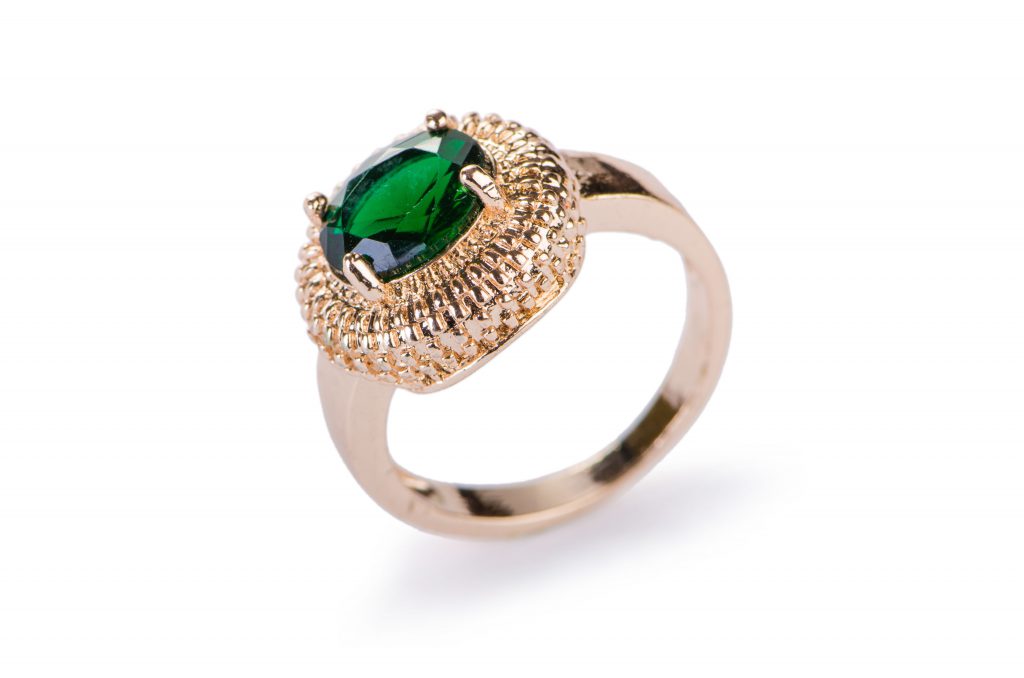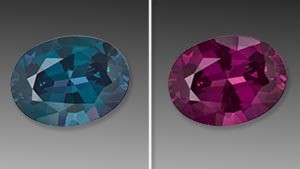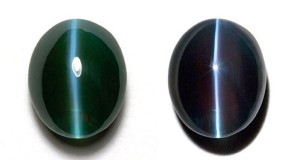Want to use Alexandrite gemstones in your jewellery making projects? Interested in exploring more about its history, its appearance and more? Read on to get your questions answered.
Alexandrite – ‘Emerald by Day and Ruby by Night’
What is Alexandrite stone?
What is Alexandrite made of? It’s a member of the Chrysoberyl family which occurs in a range of colours from green, greenish yellow and yellow through to brown.
What does Alexandrite look like?
It’s a particularly hard and durable stone, measuring 8.5 on Mohs Scale of Hardness which makes it perfect for jewellery such as Alexandrite earrings, necklaces and bracelets. Unfortunately, it is somewhat lacking in fire which can make the stones appear dull, regardless of their brilliance.
Alexandrite History
The Alexandrite stone is a relatively new gemstone which possesses unique colour changing properties, allowing each stone to appear different when viewed under incandescent light. It is also what’s known as a pleochroic gem, which means it shows different light intensity when viewed at different angles.
It was discovered in 1830 in Russia’s Ural Mountains and was named after Tsar Alexander II who emancipated Russia’s serfs.
There are some examples of Alexandrite stones in the Natural History Museum in London where they form part of the most amazing stone collection. There are actually a number of Alexandrite gemstones on display within the collection which appears to change in appearance under artificial light, with some exuding the most unbelievable luminosity.
It’s definitely worth a visit as you’re unlikely to see these natural phenomena in our general day to day jewellery life!
What is Alexandrite Birthstone Jewellery?
What is the birthstone for June? It’s Alexandrite, of course! Alongside the Pearl and the Moonstone is the much rarer and intriguing Alexandrite gemstone.
Initially displayed on Aaron, High Priest of the Hebrews breastplate, the Alexandrite gem was first thought of as a royal colour. The gem was then later connected with the 12 months of the calendar year – making Alexandrite the official June birthstone in 1912 when it was confirmed by the National Association of Jewellers.
Why not find out more about birthstones? Our Guide To Birthstones highlights the features of each birthstone and how you can use them in your next jewellery designs.
Alexandrite Cat’s Eye
Alexandrite Cat’s Eye Gemstone
A close relation within the Chrysoberyl family is the Cat’s Eye which also possesses a unique quality known as chatoyancy. When cut as a Cabochon, good examples of Cat’s Eye Chrysoberyl will exhibit a near white line across the centre of the stone due to feather like or needle like inclusions, hence the name. It is this same chatoyancy that gives Star Rubies and Sapphires their stars.
What colour is Alexandrite birthstone?
The picture above is actually an Alexandrite Cat’s Eye which can occur. This Alexandrite stone can effectively give you two phenomena within one stone, although they are extremely rare. The most desirable colour of Alexandrite Cat’s Eye is a light golden brown with darker shadowing which gives a fabulous contrast of light and dark with the white line across the centre. It is these golden tones of Chrysoberyl which are most commonly found in Alexandrite jewellery.
Where does the Alexandrite gemstone come from?
The original sources of Russian Alexandrite were exhausted years ago and until around 2015, stones were rare and few and far between. However, new deposits have been discovered in Brazil, Tanzania and Madagascar which have brought fresh bounties of Alexandrite gems onto the market with a more reasonable price tag.
As with so many gems, the best examples of Alexandrite gemstones are now found in Brazil and are generally facetted into round or cushion cuts which make the very best of the colour changing effects. In practical terms, these exquisite Alexandrite gemstones tend to be used as centrepieces for most designs and rings and pendants are perfect for this, ensuring that the Alexandrite gemstone is the focus of attention within any piece. After all rarity and beauty always command attention!

Why not use an Alexandrite stone for your next jewellery piece? Making Alexandrite jewellery couldn’t be easier with help from Cooksongold. Find everything you need to design your pieces with our vast collection of gemstones online today.

Cooksongold


